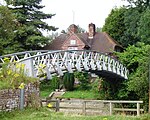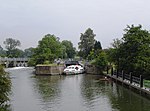Paradise Wood
Paradise Wood is a research woodland established by the Earth Trust (formerly Northmoor Trust) between the villages of Little Wittenham and Long Wittenham in Oxfordshire England. It has evolved to become the largest collection of hardwood forestry trials in Britain.Planning for the wood started in 1992 and tree planting began in 1993. The Research Woodland was originally conceived and developed by Gabriel Hemery and was established as a centre for research into the improvement of the quality and productivity hardwood trees. The ultimate aim is to create a woodland of 55 hectares in area. It contains a large number of trials supervised by the Future Trees Trust.On the northern edge of Paradise Wood a small community woodland was planted in 2005 to commemorate the 200th anniversary of the Battle of Trafalgar. It was named after HMS Neptune as part of a project with the Woodland Trust. It provides free public access and contains some oak trials.
Excerpt from the Wikipedia article Paradise Wood (License: CC BY-SA 3.0, Authors).Paradise Wood
Little Wittenham Road, South Oxfordshire
Geographical coordinates (GPS) Address Nearby Places Show on map
Geographical coordinates (GPS)
| Latitude | Longitude |
|---|---|
| N 51.637 ° | E -1.199 ° |
Address
Little Wittenham Road
Little Wittenham Road
OX14 4QT South Oxfordshire
England, United Kingdom
Open on Google Maps










